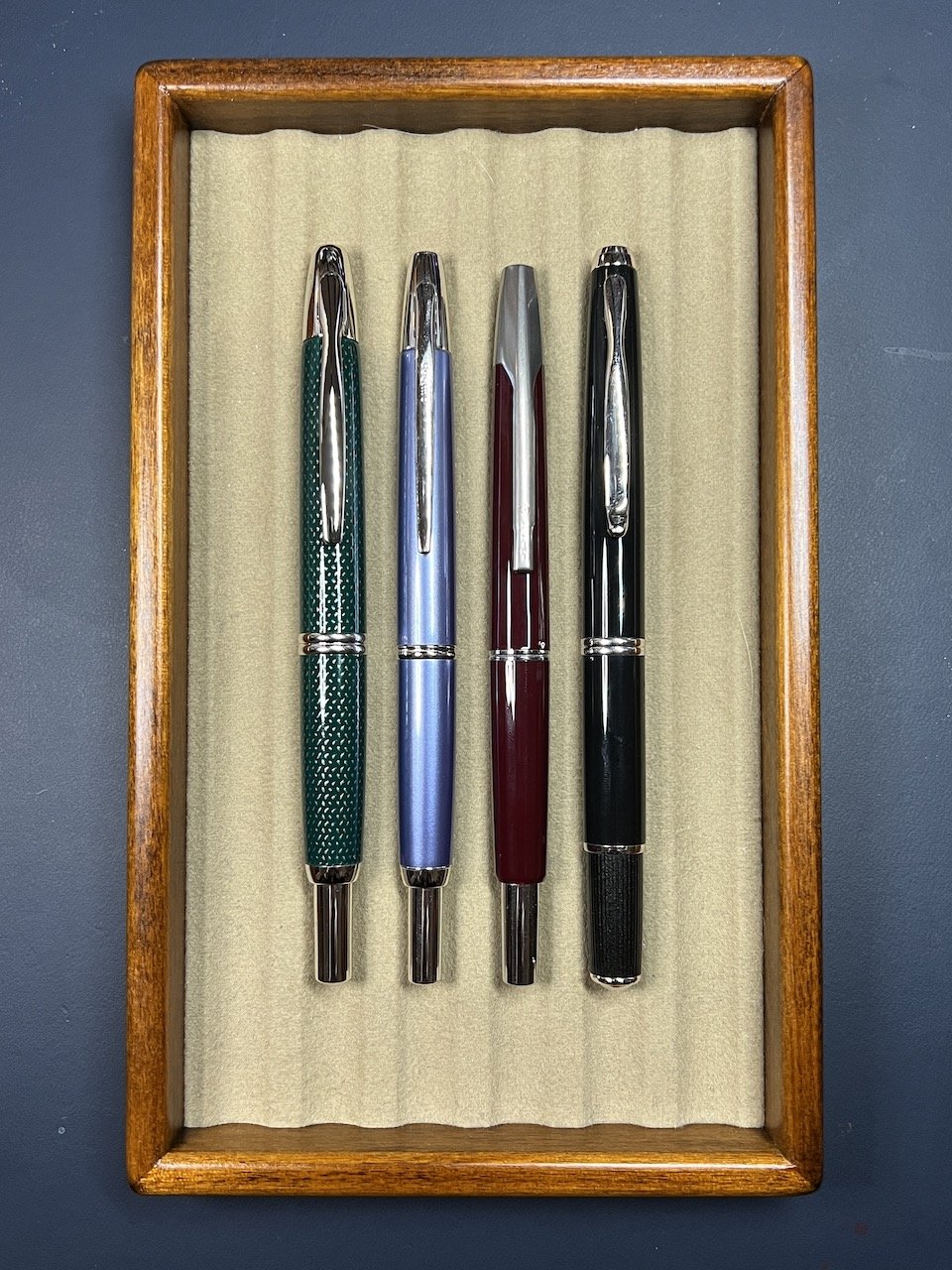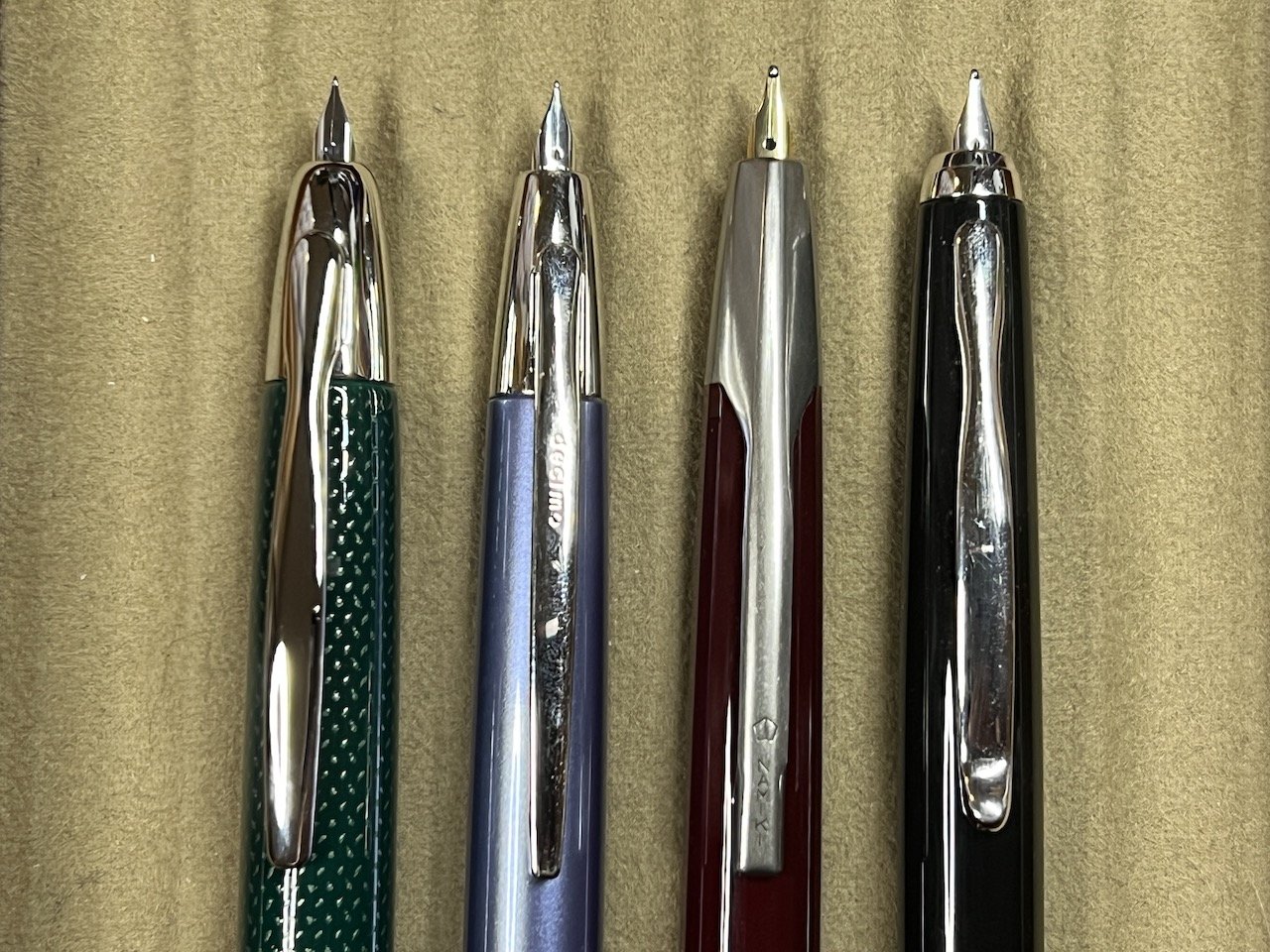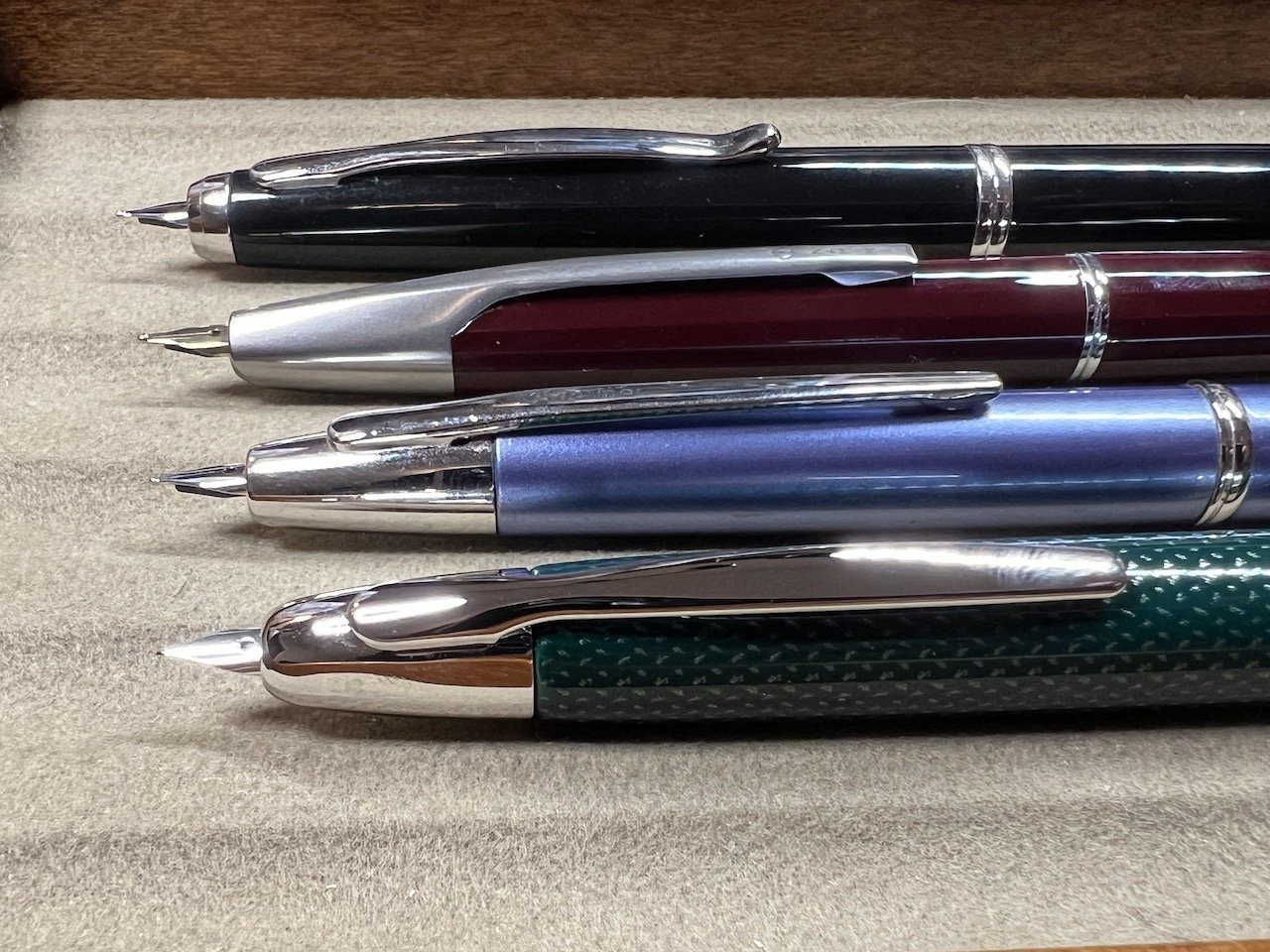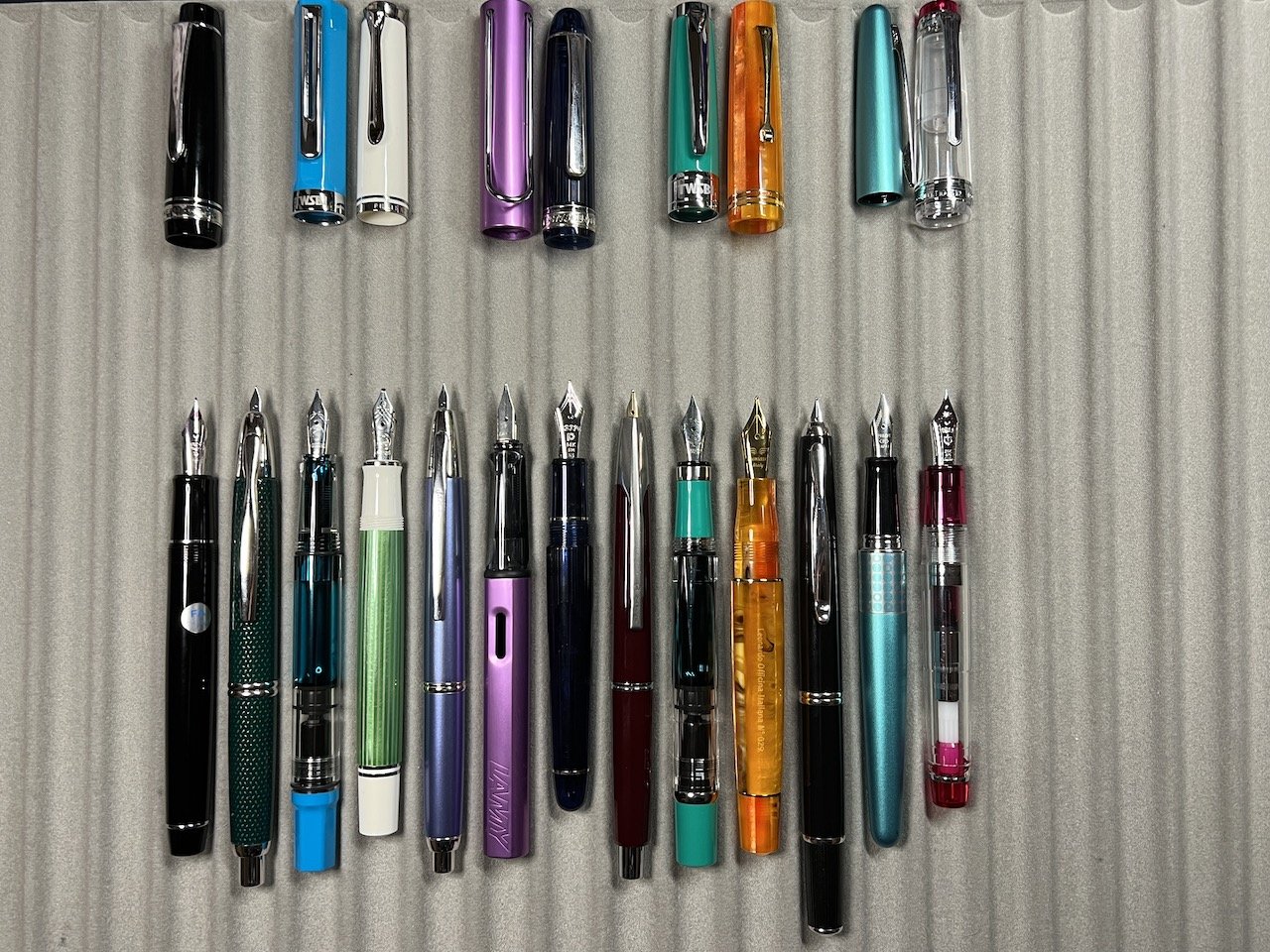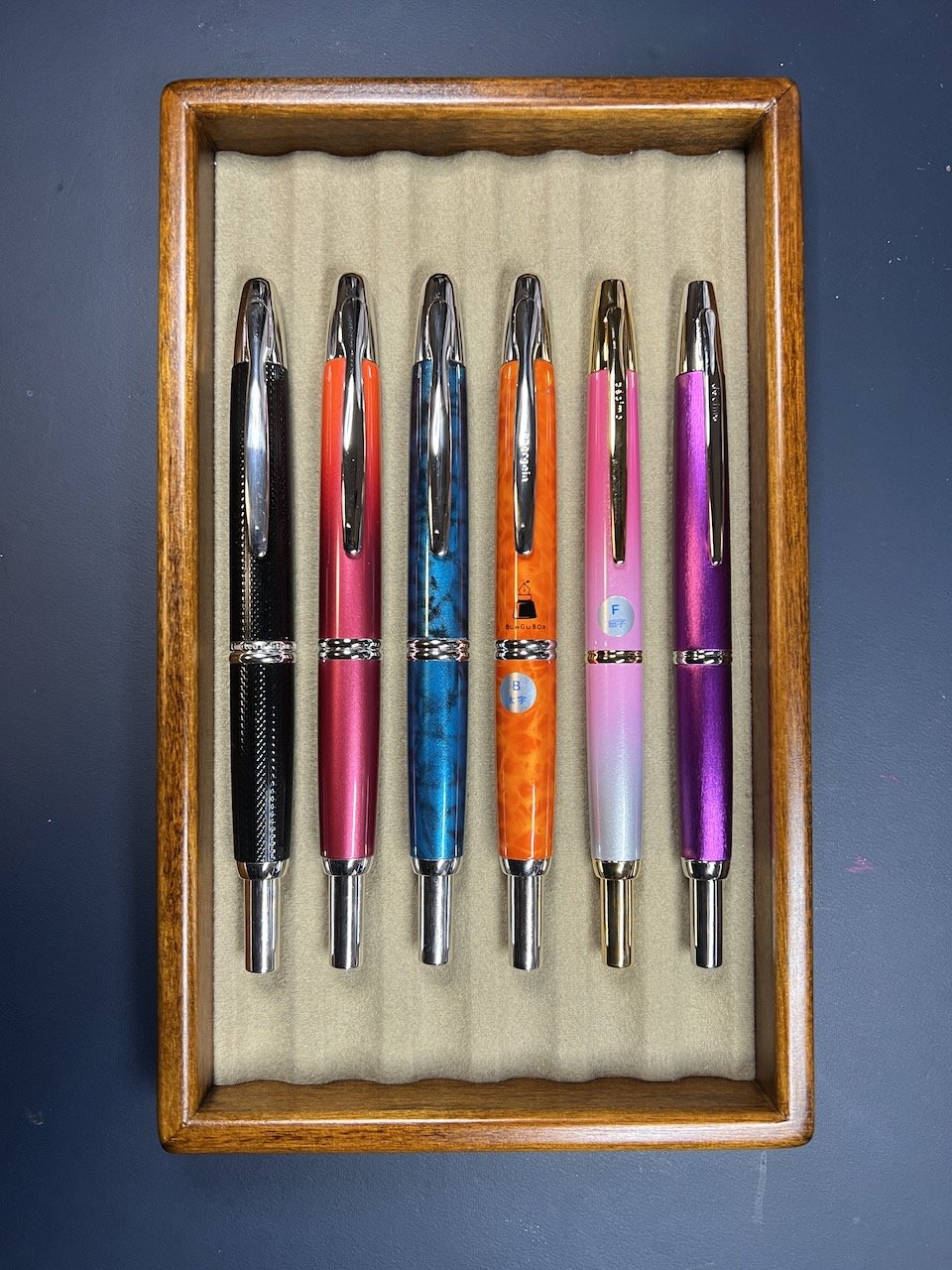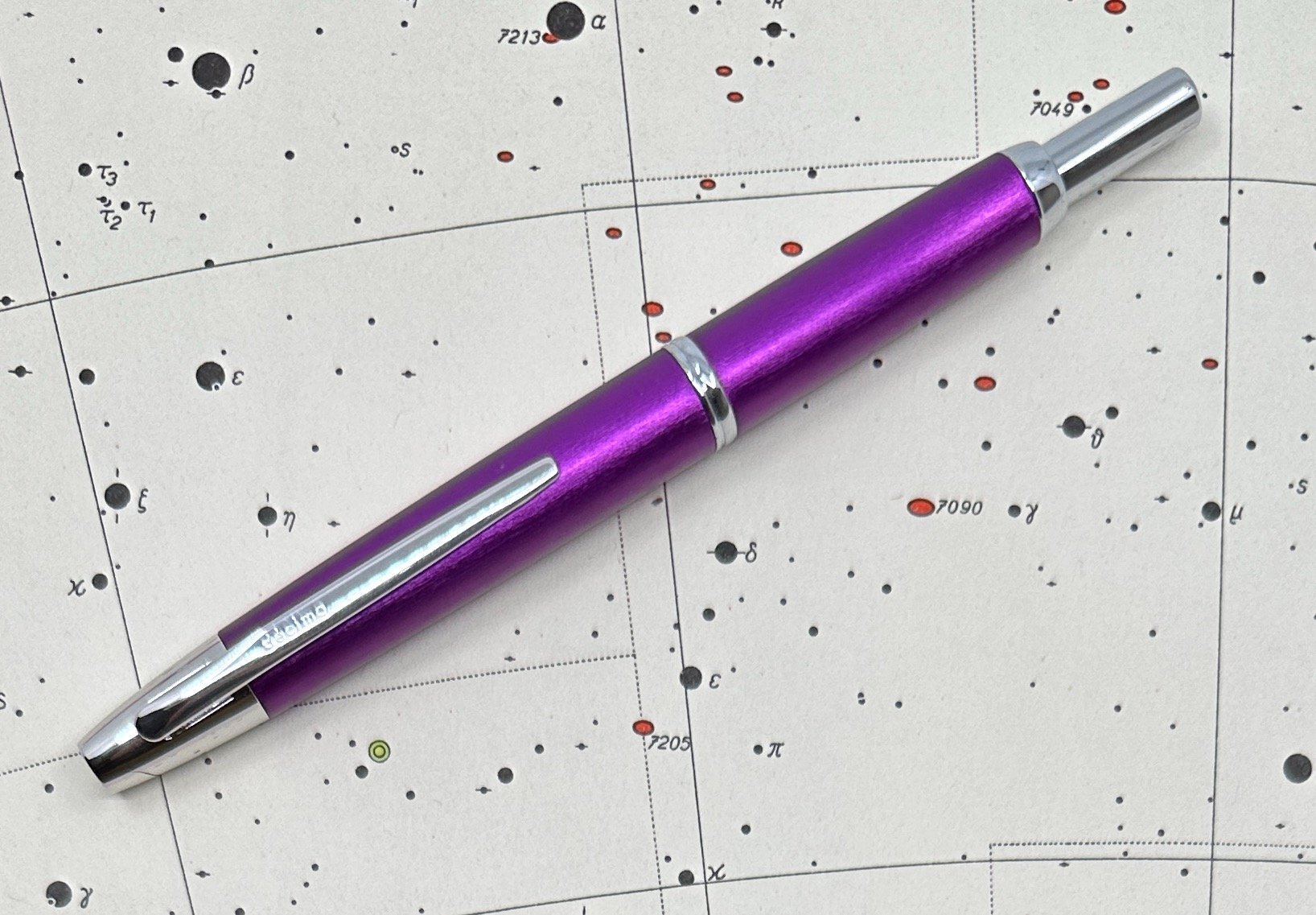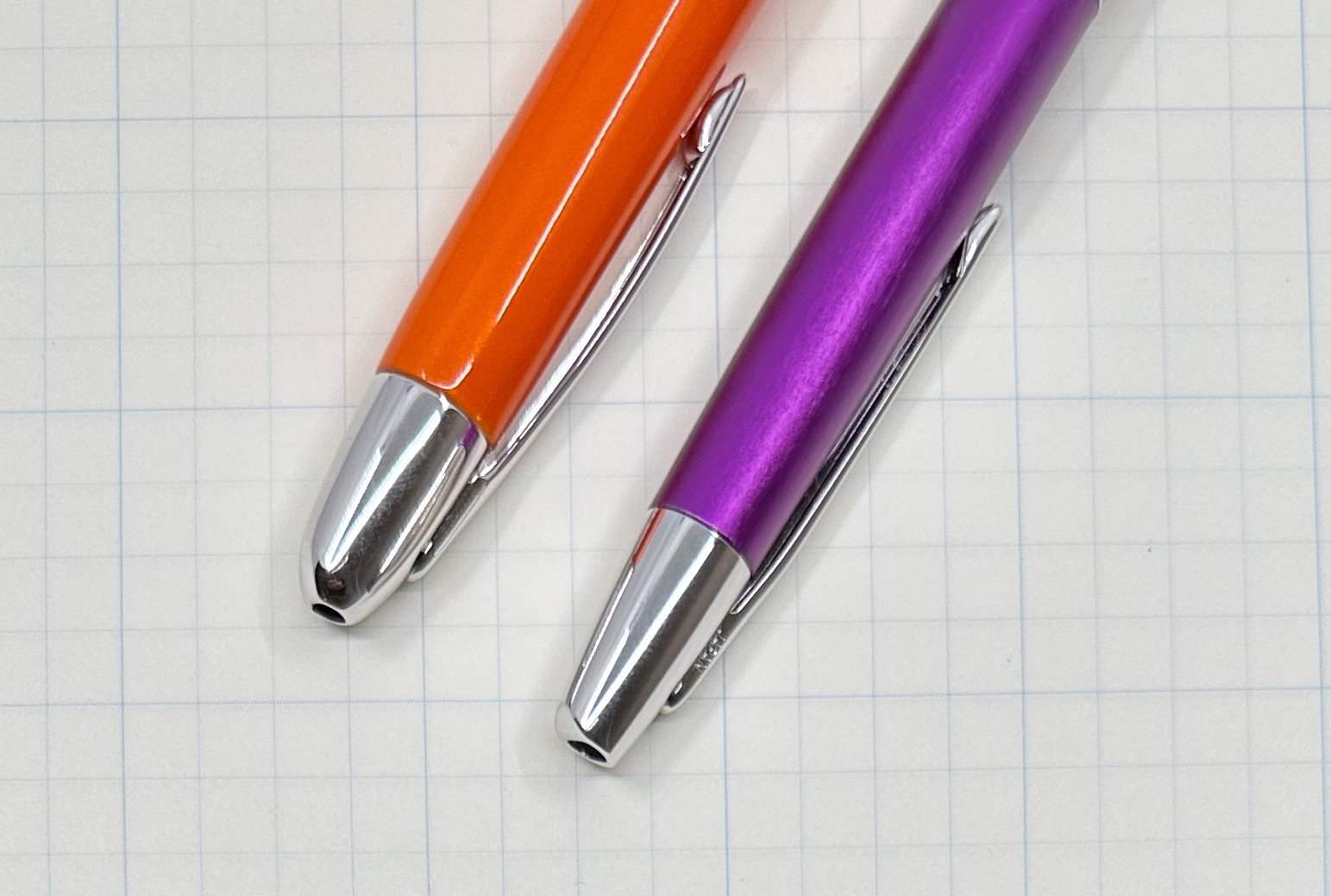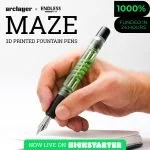(Kimberly (she/her) took the express train down the fountain pen/stationery rabbit hole and doesn't want to be rescued. She can be found on Instagram @allthehobbies because there really are many, many hobbies!.)
As a self-professed Pilot Vanishing Point (or Capless) fan, I was a little surprised at myself for not owning one with the “Special Alloy” nib, which I will be referring to as “steel” even though I don’t know for certain what alloy they used. I think “old me” had fallen into the trap of gold must be better than steel, especially since all the VP/Decimo/Fermo/etc pens had gold nibs, so I never really gave it much thought. At one point, I wanted to have Hiroko Makino of Bokumondoh do some urushi & raden work on a VP for me, so I went and ordered this steel VP because it’s significantly cheaper than a gold one, and I didn’t have the time to wait for a deal on the secondary market. I figured I could always swap in one of the other gold VP nib units later. I opted to send her different pens, so I decided to ink up this VP anyway to see how it wrote.
Pilot Vanishing Point, Deep Yellow with steel Fine nib (left), Blue Carbonesque with 18kt gold Fine nib (right.)
I originally put Jacques Herbin Brun Eiffel in the Deep Yellow VP cuz you know me and matchy matchy inks. I inked up the Blue Carbonesque VP with De Atramentis Sherlock Holmes (aka “Night Blue”). Paper is Kokuyo Perpanep Tsuru Tsuru.
Blue Carbonesque VP (top) and Deep Yellow VP (bottom.)
Despite both nibs being Fine, the gold nib felt just a wee bit softer and also gave a slightly wider line. The steel VP nib definitely felt more nail-like by comparison, not that the gold nib was bouncy or flexy by any stretch. But I could definitely feel the difference between the two.
So then I thought, well, maybe it’s the ink, so I put Brun Eiffel in the 18kt gold VP nib, and both nibs felt a bit more similar.
Both had similar line widths in print but it was more obvious with cursive, that the steel nib had a finer line.
Zooming in on some lines and squiggles, you can see that the top lines (18kt gold) are slightly wider than the bottom ones (steel.)
While I wouldn’t say the Jacques Herbin Brun Eiffel was a dry ink, it certainly isn’t as wet as De Atramentis, so I went and cleaned out the Deep Yellow VP and inked that up with DA Sherlock Holmes. I was surprised that the wetter ink didn’t produce a wider line, if anything, it almost looks like it is finer than it was with the Brun Eiffel, especially in print. I did a bit of writing after cleaning and inking to make sure it wasn’t due to a wet feed, etc., so it doesn’t make any sense.
Both pens inked up with De Atramentis Sherlock Holmes, the steel nib gave a thinner line, especially with print. The difference is less obvious with cursive.
Once again the 18kt gold nib (top) produced wider lines than the steel nib.
Before you jump to any conclusions about steel vs gold, I would also like to add that the steel writing experience was quite nice. I definitely prefer Medium nibs (in general) to Fine nibs, but the Deep Yellow VP with the steel nib wrote well and I didn’t have any problems with it in the 3 months that it’s been inked up. I’ve used it on 10 different occasions (thank you, FPC, for that handy data) and never had any hard starts, despite Brun Eiffel not being a super wet ink. I don’t love the EF VP nibs (or most EF nibs, for that matter), so this steel Fine is about as fine as I would want to write with on a regular basis. I was very pleasantly surprised at the experience and am glad I bought it.
The “special alloy” nib Pilot Vanishing Points are also available in Medium (I didn’t see any when I was originally shopping for it) as well as Fine, and seem to only be available in Black, Dark Blue, and Deep Yellow. I would assume that the Medium steel nib would feel similar, e.g. finer than the gold Medium, with a stiffer/firmer writing experience. To my knowledge, these steel nib Vanishing Points aren’t sold by US retailers besides Amazon, which was where I ordered mine. Prices range from $75-95 before sales tax. Considering a VP nib unit alone costs about $90-110, this is a pretty good way to try a real Pilot VP (not clone, homage, etc) to make sure you really like it.
(Disclaimer: I purchased mine on Amazon last year and it seems to be currently unavailable in Fine in the Deep Yellow. Here is a non-affiliate link to the Dark Blue VP, Fine, Special Alloy.)







